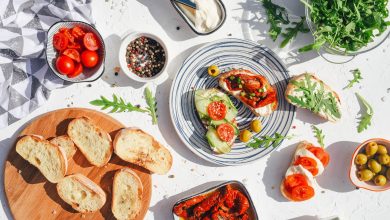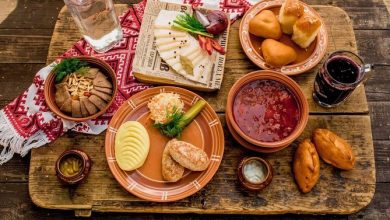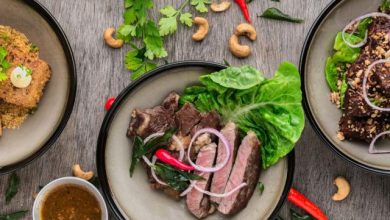Turkish cuisine. What national dishes you should definitely try.
Turkish national cuisine is part of the heritage of the Ottoman Empire, whose possessions stretched over three continents. Recipes of dishes were formed under the influence of the Balkan, North African and Middle Eastern culinary cultures. During the Ottoman period, the preparation and serving of food had special rituals.
Food occupies an important place in the life of modern Turks. Turkish cuisine is popular both among tourists and in other countries of the world, because it includes a wide variety of dishes, desserts and drinks, and recipes are made up of products that appeal to all tastes.
The vastness of Turkey’s geographic areas extended to cultural differences in eating and drinking habits. Each region has its own traditions. This is due to the dependence on the economic resources of the area and the abundance of the harvest. So, seafood and fish are very popular in the Black Sea region of Turkey, vegetarian dishes are on the Mediterranean coast, and meat dishes are in the east.
Breakfasts
The varied Turkish cuisine has a long tradition. Snacking on the run, or eating alone is not accepted here. The whole family try to have a hearty breakfast. On a table beautifully served with small plates, you can see bread, eggs, butter, smoked sausages and cheeses, fresh vegetables and fruits, honey and jam, tea or coffee.
menemen
Turks love vegetables stewed with olive oil. The dish resembles an omelet with vegetables or scrambled eggs with tomatoes. To prepare it, you will need eggs, tomatoes, pods of hot or sweet pepper (as you like), salt and black pepper.
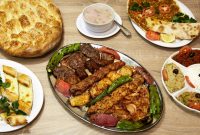
Some put chopped onion or garlic in a blender. When the vegetables are sufficiently stewed, eggs are added to them. Europeans are more accustomed to eating such a dish with a fork, but if you dip freshly baked bread into it, it will seem much tastier! Here it is customary to break bread with your hands, and not cut it with a knife.
Borek
The Turks are great craftsmen in the preparation of bread, they make it unusually tasty and fragrant. Multi-layered savory pies made from paper-thin dough are cooked in an oven. They use a variety of fillings: cheeses, spinach, spices, vegetables, fish, meat, mushrooms. From the same dough, you can bake small pies in the form of tubes fried in oil. To properly cook berek, you need special experience and skill.
Simit
Turkish bagel sprinkled with sesame, baked in the oven. Instead of sugar, some housewives use grape syrup. Simites can be eaten with melted cheese or chocolate spread. They go great with coffee or strong hot tea. The Turks believe that simit must be eaten on the day of baking. And the next day, the leftover bakery products are used as ingredients for preparing other dishes.
Olives
Green and black olives are always present on the Turkish table in the morning. Dried, marinated, pitted are laid out in different bowls. They are peppered, poured with olive oil and sprinkled with spices.
Gözleme
This dish requires a special frying pan. Baked on a saj, a thin flatbread is stuffed with spinach, cheese or minced meat.
Sujuk
Sausage made from lamb or beef can be hard, dry, cured or sweet. Thinly sliced delicacy allows you to eat them without overeating. For piquancy, Turks generously add cumin, pepper and garlic to sujuk.
Snacks
Before the main course in Turkey, light salads and snacks are always served. Although the Koran does not encourage the use of alcohol, the Turks allow themselves to drink a few shots of rakia. National grape vodka (“lion’s milk”), infused with anise, is diluted with water. Mezze is traditionally served with rakia. This is the name of a variety of snacks, laid out on small plates.
The assortment may consist of cheese, chopped melon, bread, sauces made from garlic yogurt, pickled vegetables, fish, eggs, pies, salads, fried squid or mussels. After the mezze, the main course is served on the table, with which the appetizers must be combined.
Piyaz
A simple boiled bean salad is very satisfying. Its composition, in addition to white beans, includes boiled eggs, fresh tomatoes, onions, olives, parsley. The salad is dressed with a sauce that includes sesame paste, garlic, vinegar, lemon, olive oil, cumin and salt.
Kysyr
An alternative dish to salad is made from finely crushed bulgur (shredded wheat). Other ingredients are salchi (hot pepper paste), tomato paste, green onion, parsley, olive oil, pomegranate sauce, lemon, pepper, garlic and lettuce.
Due to the use of oil and tomato paste, the dish has a beautiful bright orange hue. Cooked food is first laid out in small bowls, covered with a plate on top, and then turned upside down. Kysyr in the shape of a vase looks beautiful on a plate.
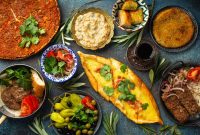
Kofte
Balls (meatballs) made from eggs, minced meat and spices. They are served fried, raw or baked. Foreigners are usually afraid to eat raw kofte.
Sarma
Stuffed cabbage or vine leaves. The filling may consist of rice, pumpkin, eggplant, tomatoes, sweet peppers.
murgver
Small cutlets (meatballs) consist of lentils, where couscous or bulgur is added. They are wrapped in green lettuce leaves, pre-sprinkled with juice from a squeezed lemon.
Jajik
This traditional Turkish dish may resemble our kefir-based okroshka. It works great in hot weather. In addition to unsweetened yogurt, you will need fresh cucumbers, dry ground mint, garlic and salt. Yogurt should be diluted with cold water, then add the rest of the ingredients.
Soups
Soups have played an important role in Turkish cuisine for centuries. Therefore, it is not surprising that there are a great many of them. Recipes differ by region, characteristic spices and ingredients are used, as well as cooking methods. The most popular foods for cooking first courses are meat, chicken, legumes, flour, yogurt, noodles, fish, black cabbage and fruit.
Soups are usually named after their main ingredient. For example, if it is made from mersimek (lentils), then it is called Mercimek orbası, if yogurt is the main ingredient, then the name of the soup is Chorbasy yogurt. Listed below are soups that have an important place in Turkish cuisine.
